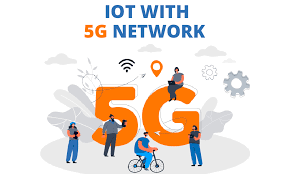
The implications of the 5G rollout for law enforcement
The implications of the 5G rollout for law enforcement
The implications of the 5G rollout for law enforcement
The long awaited upGrade from 4G to 5G will allow ultrafast Internet speeds and seamless connectivity across the country compared to 4G.
The implications of the 5G rollout could be significant, particularly for law enforcement in India.
Ensuring security On the one hand, the 5G rollout is set to enhance efficiency, productivity, and security by helping the police access critical information in real time and nab criminals.
5G has high bandwidth and low latency, so its adoption would ensure the best performance of police devices such as body cams, facial recognition technology, automatic number plate recognition, drones, and CCTVs.
5G promises to transmit clearer images. This will simplify the task of the police who, at present, often look at hazy images from devices and attempt to decipher them while working on cases.
The increased storage capacity promised by 5G will allow the politics -streamline their investigation methods. 5G will also allow rapid and secure communication.
challenges in adopting 5G.
the necessary infrastructure to take full advantage of all that 5G can offer. secure data from telecom operators, they will still need tools to access this data. police systems are outdated and may not be compatible with 5G.
To bridge this technology gap, the police must invest in modern tools, software and infrastructure.
Cyber security concerns previous networks were hardware based, India could practice cyber hygiene. But 5G is a software defined digital routing.
as 5G lacks endtoend encryption, hackers can plot their attacks more precisely and perpetrate cybercrimes by hacking into systems or disseminating illegal content. The bandwidth expansion due to 5G will enable criminals to embezzle data bases easily. With time, as 5G connects with additional devices, the frequency of attacks could increase.
The impact that the rollout of 5G in India could have on crime and criminals is pretty obvious and should be taken seriously. For example, a person could set up a fake 5G tower on top of a public building and manipulate it to intercept private phone calls or send fake messages.
Or he could steal a person’s phone, sign in to his 5G connection with an existing account, gain access to the person’s data or make purchases using the person’s credit card.
Criminals could use 5G to conceal their activities or mask their location, cyber bullying.
Criminal groups may be able to easily coordinate DDoS onslaughts because of the realtime communication capabilities between multiple criminal groups.
They could also hack into Internet ofThings (IoT) devices and remotely commit crimes. For example, they could hack into a victim’s vehicle and cause an accident in order to collect insurance money, or hack into smart homes and smart cars to loot personal information, or inflict physical crimes.
Security patching of all IoT devices may eventually become necessary.
Terrorists, too, could benefit from 5G as the high speed would allow them to execute attacks more rapidly and precisely. With 5G, terrorists can plan attacks without having to travel physically or use telephones, which could leave a trail for law enforcement agencies to act on. Fighting new age crimes.
Measures to hinder crimes facilitated by 5G technology-
First, the police will need to be trained so that they recognize new 5Genabled crimes.
Second, training programmes focusing on such crimes must be developed. This includes identifying potential scenarios for new types of crimes and their prevention.
Third, the government and telecom companies could think of setting up a 5G crime monitoring task force to monitor and identify new crimes and develop countermeasures.
Fourth, it is imperative to create regulations that make it a crime for people to
use 5G technology to commit crimes. Such a regulation could help prevent criminals from using stolen or counterfeit equipment since telecom companies will be able to track the location of the equipment and shut it down remotely.
Fifth, regulations may also require telecom companies to allow police officers access to their equipment to track the location of victims and perpetrators of 5Gfacilitated crimes for countermeasures. These countermeasures may not only safeguard critical infrastructure but also defend private citizens from cyber attacks using 5G technology.
Finally, law enforcement agencies will have to evolve strategies to identify victims of 5Gfacilitated crimes, locate them and take action against the perpetrators of such crimes.
The 5G rollout will be a game changer for law enforcement agencies. It will enable the police fight crime effectively. At the same time, criminal use of 5G is inevitable. In this context, the recent recommendation of the Telecom Regulatory Authority of India to the government to develop a national road map for India to implement 5G in the best possible manner should encompass law enforcement requirements.
